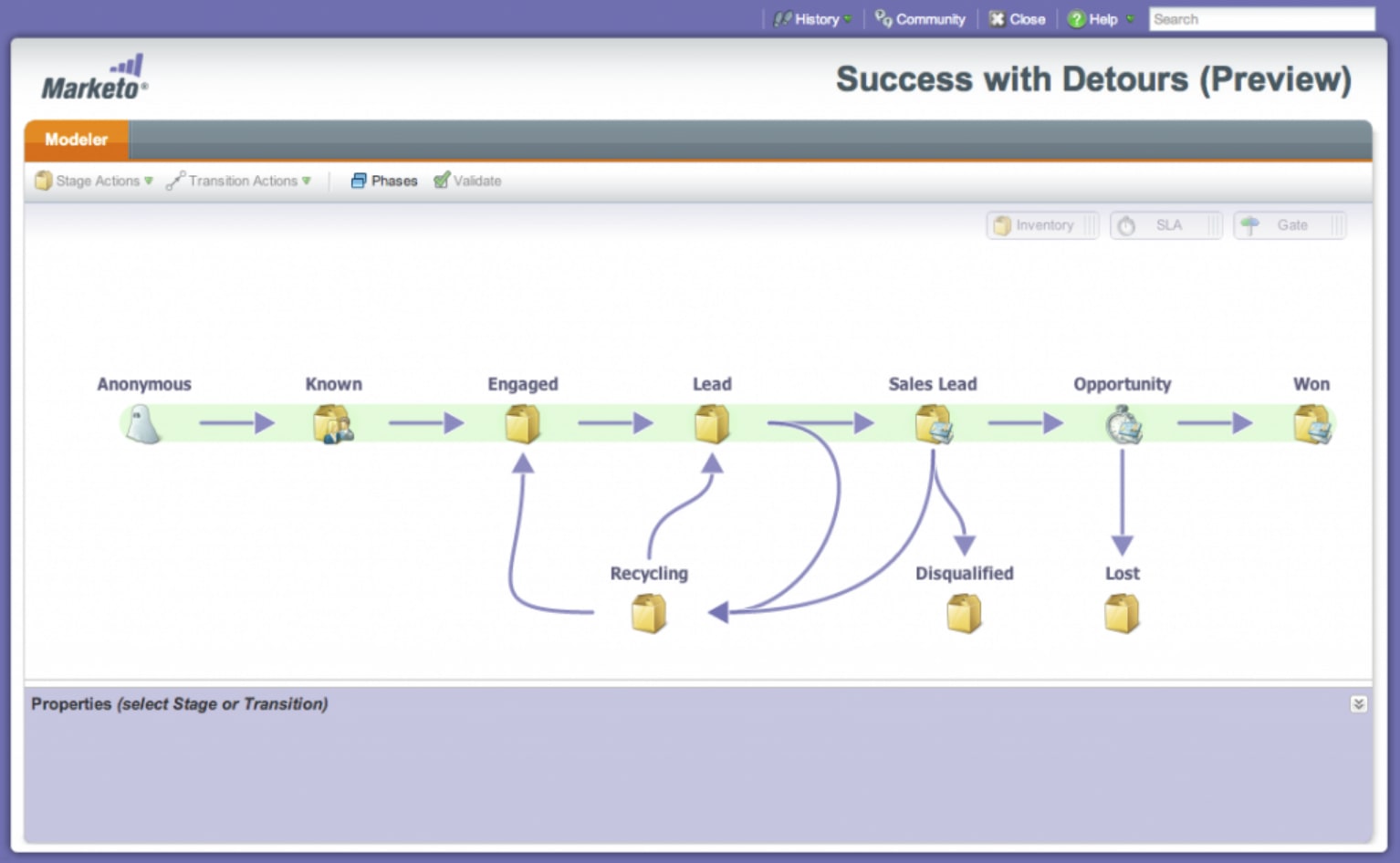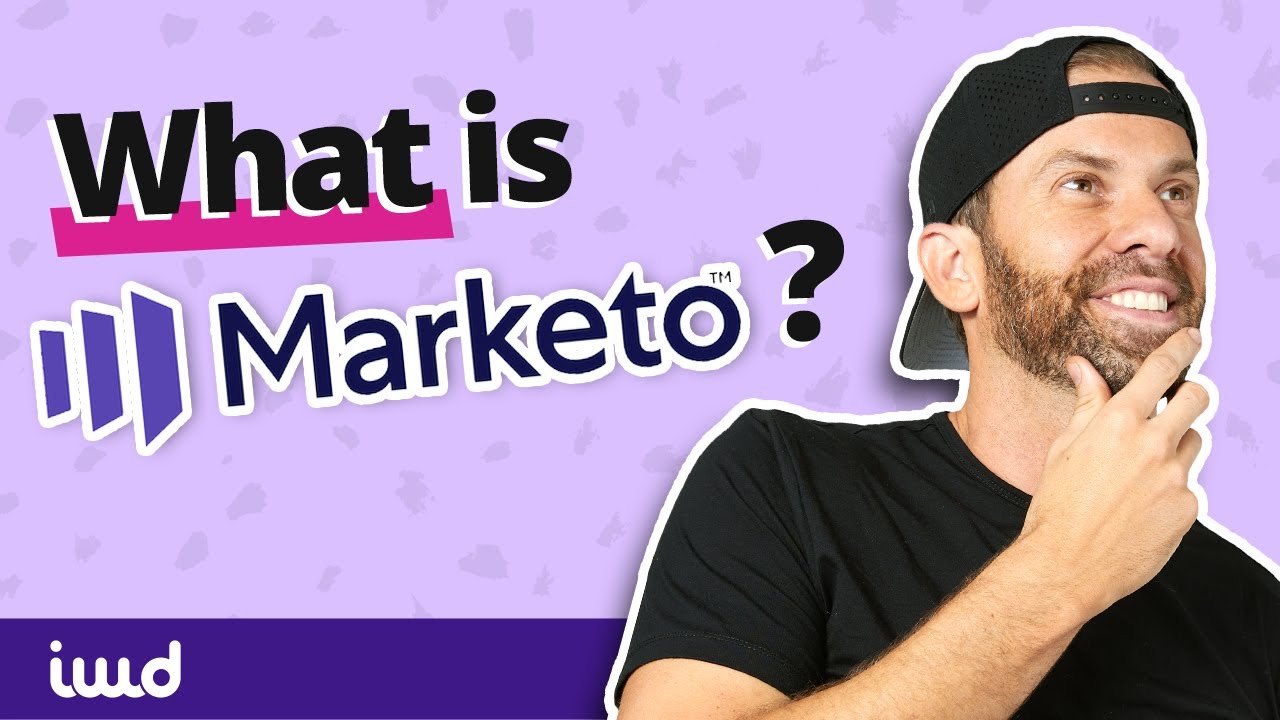Marketo is used for marketing automation, helping businesses manage campaigns and customer engagement. It streamlines lead generation, nurturing, and analytics to boost sales.
Marketo stands out as a powerful tool in the marketing landscape. Companies utilize it to automate repetitive tasks and track customer interactions effectively. With its robust features, businesses can create targeted campaigns that resonate with specific audiences. Marketo enhances lead management by scoring and nurturing prospects, ensuring they receive the right information at the right time.
Its analytics capabilities offer insights into campaign performance, enabling data-driven decisions. Marketo integrates seamlessly with various platforms, making it a versatile choice for organizations of all sizes. Understanding Marketo’s functionalities can significantly improve marketing efforts and drive growth.

Credit: axamit.com
Introduction To Marketo
Marketo is a powerful marketing automation platform. It helps businesses streamline their marketing efforts. Marketo allows companies to engage with customers effectively. This platform enhances lead generation and nurtures customer relationships.
The Genesis Of Marketo
Marketo was founded in 2006. The founders aimed to simplify marketing. They wanted to make it accessible for all businesses. In 2013, Marketo went public. The company grew rapidly and gained a strong reputation in the industry.
In 2018, Adobe acquired Marketo. This acquisition expanded Adobe’s marketing solutions. Marketo now integrates with Adobe’s suite of products.
Core Features At A Glance
Marketo offers a variety of features. Here are some key functionalities:
- Email Marketing: Create and send targeted email campaigns.
- Lead Management: Track and nurture leads through their journey.
- Analytics: Measure campaign performance with detailed reports.
- Landing Pages: Design custom landing pages for campaigns.
- CRM Integration: Connect with popular CRMs like Salesforce.
Marketo enables businesses to:
- Automate repetitive tasks.
- Personalize customer experiences.
- Enhance customer engagement.
- Drive better ROI on marketing efforts.
Overall, Marketo empowers businesses to achieve their marketing goals efficiently.
Lead Management With Marketo
Marketo is powerful for managing leads effectively. It helps businesses capture, nurture, and convert leads into customers. The platform streamlines the entire lead management process. This ensures sales teams focus on high-quality leads.
Nurturing Leads To Maturity
Nurturing leads is essential for growth. Marketo allows businesses to engage leads over time. Here are some key features:
- Email Campaigns: Automated emails keep leads informed.
- Content Personalization: Tailored content boosts engagement.
- Multi-Channel Outreach: Reach leads through different platforms.
Marketo tracks lead interactions. It helps identify interests and preferences. This data guides the nurturing process. Businesses can create targeted workflows. These workflows help leads move closer to purchase.
Scoring Leads For Sales Prioritization
Lead scoring is vital for sales success. Marketo uses a scoring system to rank leads. The scoring is based on behavior and engagement. Key factors include:
| Factor | Score |
|---|---|
| Email Opens | +5 points |
| Website Visits | +10 points |
| Content Downloads | +15 points |
High-scoring leads are prioritized for follow-up. This helps sales teams focus on leads ready to buy. Marketo’s lead scoring ensures efficient use of resources.
Email Marketing Strategies
Email marketing is a powerful tool for businesses. It helps connect with customers directly. Marketo offers various features for effective email marketing strategies.
Crafting Personalized Emails
Personalization boosts engagement. Marketo allows users to tailor emails based on customer data.
- Name: Use the recipient’s name in the subject line.
- Preferences: Send content based on user interests.
- Behavior: Target users based on their actions.
Templates in Marketo simplify the design process. Users can create visually appealing emails that resonate with readers.
Analyzing Email Campaign Performance
Measuring success is crucial. Marketo provides tools to analyze email campaign performance.
| Metric | Description |
|---|---|
| Open Rate | Percentage of recipients who opened the email. |
| Click-Through Rate | Percentage of users who clicked links in the email. |
| Conversion Rate | Percentage of users who completed the desired action. |
Marketo displays these metrics in easy-to-read dashboards. This helps in making informed decisions for future campaigns.
Leveraging Marketo For Social Media
Marketo is a powerful tool for managing social media campaigns. It helps businesses connect with their audience effectively. Marketo streamlines social media efforts and enhances engagement. Companies can target the right audience with personalized messages.
Integrating Social Platforms
Marketo allows easy integration with various social media platforms. This ensures seamless communication across channels. Here are some key integrations:
With these integrations, businesses can:
- Schedule posts ahead of time.
- Share content automatically.
- Engage with followers directly.
Marketo’s social tools help brands maintain a consistent voice. This builds trust and loyalty among followers.
Measuring Social Engagement
Measuring social engagement is crucial for success. Marketo provides valuable insights into audience interactions. Here are some metrics to track:
| Metric | Description |
|---|---|
| Likes | Shows how many users appreciate your content. |
| Shares | Indicates how often users share your posts. |
| Comments | Measures the level of audience interaction. |
| Click-through Rate (CTR) | Shows the percentage of users who clicked your links. |
Using these metrics helps businesses adjust strategies. Marketo enables data-driven decisions for better results. Companies can refine their approach based on real-time feedback.
Web Personalization Techniques
Web personalization techniques enhance user engagement and satisfaction. Marketo allows businesses to tailor experiences for each visitor. This leads to higher conversion rates and improved customer loyalty. Let’s explore how Marketo achieves this through effective personalization strategies.
Tailoring User Experience
Marketo uses various strategies to tailor user experiences:
- Dynamic Content: Change website content based on user data.
- Behavior Tracking: Monitor user actions for personalized offers.
- Segmentation: Group users based on interests and behaviors.
These techniques create a unique journey for each visitor. Users receive relevant messages that resonate with their needs. This leads to a more enjoyable browsing experience.
Boosting Conversion Rates
Personalization significantly boosts conversion rates. Here’s how:
- Targeted Messaging: Send messages that speak directly to users.
- Relevant Offers: Present deals based on user behavior.
- Customized Landing Pages: Design pages that match user interests.
Marketo helps businesses implement these strategies effectively. The result? Higher engagement and more sales.
| Technique | Description | Benefit |
|---|---|---|
| Dynamic Content | Automatically change content to fit user profiles. | Increases relevance and engagement. |
| Behavior Tracking | Analyze user actions to inform personalization. | Improves targeting accuracy. |
| Segmentation | Group users for tailored marketing campaigns. | Enhances message effectiveness. |
Using these techniques, Marketo transforms how businesses interact with customers. Each visit feels personal, driving loyalty and sales.

Credit: www.ventureharbour.com
Sales And Marketing Alignment
Sales and marketing alignment is crucial for business success. It means these teams work closely together. Both teams share goals and strategies. This helps create a seamless customer experience. Marketo plays a key role in this alignment.
Bridging The Gap With Marketo
Marketo offers tools that connect sales and marketing. These tools help teams communicate better. Here’s how:
- Shared Data: Both teams access the same information.
- Lead Scoring: Marketo ranks leads based on interest.
- Collaboration Features: Teams can work together on campaigns.
This shared approach reduces misunderstandings. It also increases efficiency. Both teams can focus on what matters most: the customer.
Creating A Unified Funnel
A unified funnel is essential for tracking customers. Marketo helps create this funnel by:
- Tracking customer interactions across channels.
- Providing insights into customer behavior.
- Aligning marketing efforts with sales strategies.
This way, teams can see how leads progress. They can adjust strategies based on real-time data.
| Feature | Benefit |
|---|---|
| Lead Management | Improves lead nurturing and conversion rates. |
| Analytics | Provides insights for better decision-making. |
| Email Campaigns | Enhances communication with potential customers. |
With Marketo, sales and marketing can truly work as one. This partnership drives better results and happier customers.
Advanced Analytics And Reporting
Marketo offers powerful tools for advanced analytics and reporting. These features help businesses understand their marketing efforts. Companies can track campaigns and measure success effectively. Marketo transforms raw data into actionable insights.
Gleaning Insights From Data
Marketo provides detailed reports on various marketing activities. Users can explore metrics like:
- Lead generation
- Engagement rates
- Conversion rates
Data can be visualized through charts and graphs. These visuals make it easier to spot trends. Marketo’s dashboards present information in real-time. Users can customize dashboards to fit their needs.
Improving Strategies Over Time
With Marketo’s reporting tools, businesses learn from past campaigns. They can identify what works and what doesn’t. This leads to:
- Better targeting of audiences
- Refined messaging
- Increased ROI
Marketo allows users to run A/B tests. This helps in determining the most effective strategies. Continuous improvement becomes a natural part of the marketing process.
| Metric | Importance |
|---|---|
| Lead Generation | Measures new potential customers |
| Engagement Rates | Tracks audience interaction |
| Conversion Rates | Shows successful sales or actions |

Credit: business.adobe.com
Frequently Asked Questions
What Is Marketo Primarily Used For?
Marketo is primarily used for marketing automation, helping businesses streamline campaigns and manage customer engagement.
How Does Marketo Enhance Lead Management?
Marketo enhances lead management through scoring, nurturing, and tracking leads across different marketing channels.
Can Marketo Integrate With Other Tools?
Yes, Marketo integrates seamlessly with CRM systems, social media platforms, and analytics tools for enhanced functionality.
What Are The Benefits Of Using Marketo?
Benefits include improved campaign efficiency, better analytics, personalized marketing, and increased lead conversion rates.
Is Marketo Suitable For Small Businesses?
Marketo is scalable, making it suitable for small businesses looking to enhance their marketing efforts effectively.
Conclusion
Marketo is a powerful tool for businesses aiming to enhance their marketing efforts. It streamlines tasks like lead generation, email marketing, and analytics. By leveraging its features, companies can create personalized campaigns that resonate with their audience. Ultimately, Marketo helps drive growth and improve overall marketing efficiency.
Embrace its potential for success.


0 comments